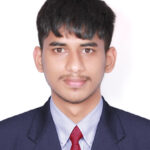Ebook- Certified investment banking
MARKET INFRASTRUCTURE INSTITUTIONS -2
As regards CDSL, the member-brokers give pay-in instructions to their respective DPs. The securities are transferred by the DPs to the Clearing Member (CM) Principal Account. The member-brokers are required to give confirmation to their DPs, so that securities are processed towards pay-in obligations.
Alternatively, the member-brokers may also effect pay-in from the clients’ beneficiary accounts. For this, the clients are required to mention the settlement details and clearing member-broker ID of the member-broker through whom they have sold the securities.
Thus, in such cases the Clearing Members are not required to give any delivery instructions from their accounts. In case a member fails to deliver the securities, the value of shares delivered short is recovered from him at the standard/closing rate of the scrips in the trading day
Auto delivery facility
This auto delivery facility is available for CRS (Normal & Auction) and for trade to trade settlements. This facility is, however, not available for delivery of non-pari passu shares and shares having multiple International Securities Identification Number (ISINs).
The member-brokers wishing to avail of this facility have to submit an authority letter to the Clearing House. This auto delivery facility is currently available for Clearing Member (CM) Pool
Pay-in of securities in physical form
In case of delivery of securities in physical form, the member-brokers have to deliver the securities to the Clearing House in special closed pouches along with the relevant details like distinctive numbers, scrip code, quantity, etc., on a floppy.
Funds Pay-in
Once the reconciliation of securities is completed by the Clearing House, the bank accounts of member-brokers maintained with the ten clearing banks, are directly debited through computerized posting for their funds settlement obligations.
Securities Pay-out
Funds Payout
Market Abuse




NATIONAL STOCK EXCHANGE OF INDIA LTD. (NSEIL)
It is a single stock exchange and all other centres are electronically linked to this exchange. NSEIL was promoted by leading FIs at the behest of Government of India and was incorporated in November 1992 as a tax-paying company unlike other stock exchanges in the country.
On its recognition as a stock exchange under the Securities Contracts (Regulation) Act, 1956 in April 1993, NSEIL commenced operations in the Wholesale Debt Market (WDM) segment in June 1994, operations in the Capital Market (CM) segment in November 1994, and operations in derivatives segment in June 2000
Capital Market Segment
Wholesale Debt Market Segment
Contracts
Clearing and Settlement
Derivatives Segment
TRADING AND SETTLEMENT AT NSE

Automated screen based trading
National Securities Clearing Corporation Limited (NSCCL)


Clearing Mechanism
Trades in rolling segment are cleared and settled on a netted basis. Trading and settlement periods are specified by the Exchange/Clearing Corporation from time to time. Deals executed during a particular trading period are netted at the end of that trading period and settlement obligations for that settlement period are computed. A multilateral netting procedure is adopted to determine the net settlement obligations.
Clearing

STRAIGHT THROUGH PROCESSING
It involves use of a system to process or control all elements of the work flow of a financial transaction, what are commonly known as the Front, Middle, Back office and General Ledger. In other words, STP allows electronic capturing and processing of transactions in one pass from the point of order origination to final settlement.

Advantages of Straight Through Processing
Reduced risk
Automation of manual process minimizing errors
Greater transparency with clear audit trail
Increases competitive advantage of our markets
Eliminates paper work and minimizes manual intervention
Enables increased cross border trading (FII trades)
Improved operational efficiency in handling larger volumes
Facilitates movement towards shorter settlement cycles (T+1)
Timely settlement of trades and instructions
Lower cost per trade
WHAT IS RISK MANAGEMENT

